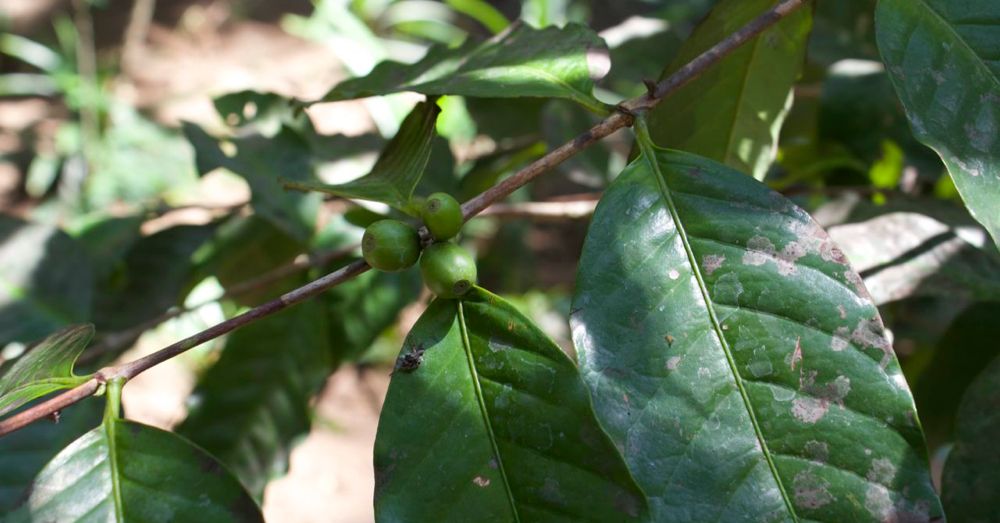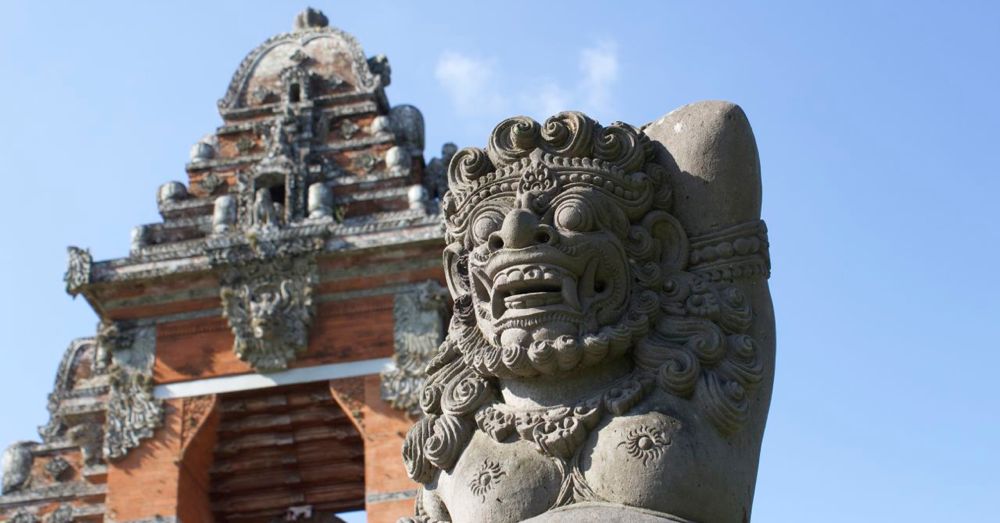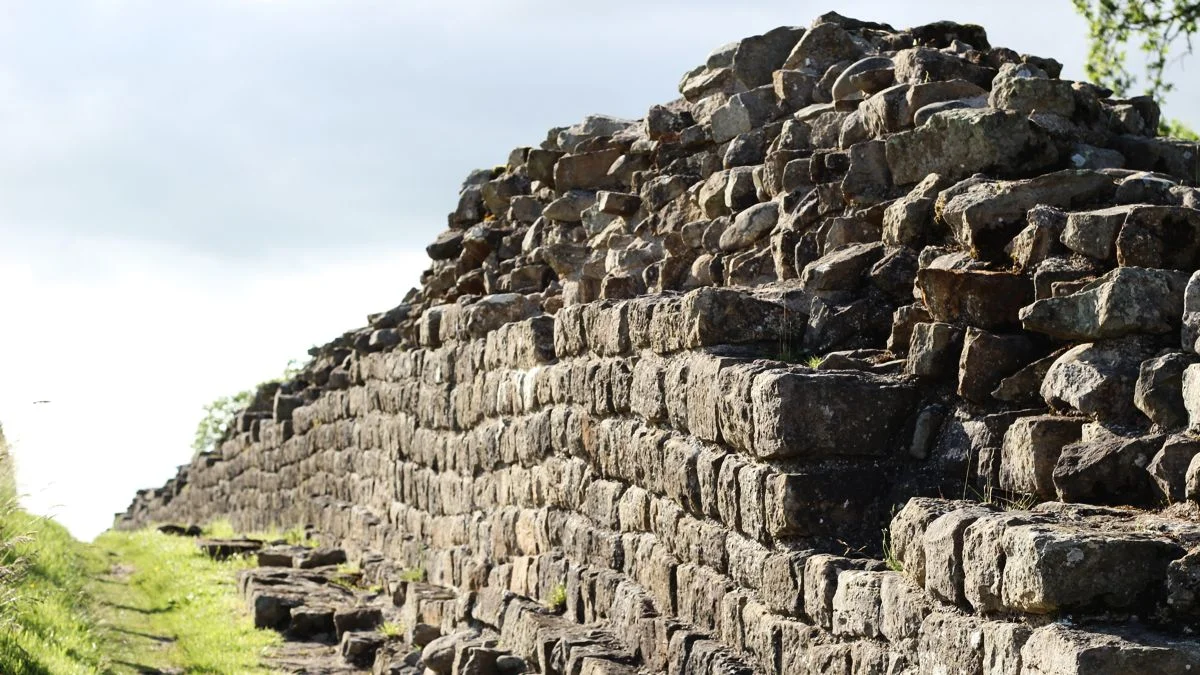Wednesday, 29-10-2014. Day 70.
Coffee, Tea, and Temples
Now that we had a plan for getting around Bali, we arranged with our driver to take a tour of a few key sights as of the sights around Bali. Our first tour would take us to four different locations, ending at sunset at Pura Tanah Lot, one of the most popular temples for tourists to visit.
Semar Kuning I (Artist Village)
Pictures weren't allowed here, so this was outside the compound.
Our first stop was the artist village at Semar Kuning I. We didn't know anything about this place, but as soon as we got out of the car, a guide attached himself to us and told us everything we needed to know. He described it as a place where artists are invited to come and make their art. We didn’t see any artists, though. Our guide told us they were all at lunch.
As we walked around the building looking at the art, our guide followed us. Inside the building, there were many different rooms of varying sizes, each emphasizing a different art style like classical, abstract, nature, religious, traditional Balinese (as they were explained to us). What was most interesting was how all the doors looked like mirrors.
Much of the artwork, mostly oils but some mixed media work, was very nice, though you could definitely tell each artist had a certain style or had something they really liked to paint (the fish artist, the peacock artist, the artist who liked to paint breasts).
Some of the art, especially the traditional Balinese work, was very intricate and, as our guide explained, could take an artist six months to complete. We didn’t ask about prices, but we did hear a different guide tell an interested buyer that a large (at least 36” wide) painting would be 2,500,000 Rp (around $200 US).
Although we found some of the art appealing, we left without buying anything. It would be hard to bring it with us as we continued on our journeys.
Teba Sari Coffee Plantation
Coffee cherries!
Our second stop was the Teba Sari Coffee Plantation where they grow, roast, and sell traditional Bali coffee as well as the fabled Kopi Luwak, also known as civet coffee or, to its detractors, "poop coffee" (not without good reason).
The Allure of Kopi Luwak
As part of its diet, the palm civet cat (the luwak) eats the coffee cherry, bean and all. During digestion, the bean is treated by enzymes in the civet’s stomach, then, as happens after digestion, the bean passes out the other end, intact. Then animal's feces are harvested, and the beans are separated and roasted.
In Los Angeles, kopi luwak sells for upwards of $80 a cup or something like $300 to $600 a pound. In Bali, it sells for $4.25 or so per cup and for 340,000 Rp for 100g (that's about $28 for 10 servings), which is the equivalent of about $125 per pound. It is, gram for gram, one of the most expensive things one can buy in Bali.
The plantation keeps a number of these civets in cages for, one presumes, easy access to their feces. It was a sad part of the tour.
As part of the tour, we were shown to a small hut in the plantation where a woman sat next to a small brick rocket stove stirring a wok full of coffee beans to brown perfection. When I asked her how long it took, she said it takes her one hour to roast one kilogram of coffee.
The whole display felt more like coffee theater for the tourists than the reality of how the place really roasts their beans.
I'm not buying that this is how they still roast their coffee.
From there we were escorted to a small serving area where we got to sample all of the many coffees (except the kopi luwak, which they sold for 50,000 Rp a cup) and teas they produced there.
Everything they make is ground to a fine powder and then mixed with hot water. For most of the teas and some of the coffees (like red rice coffee), sugar is added during the grinding process, so they're quite sweet.
Coffee tasting.
The kopi luwak didn't have any added sugar though; it had a very smooth, very rich flavor.
Kopi Luwak
I also tried some of their alcohols: brem (made from black rice with 5% alcohol content; some of the “worst booze on the planet” according to Gizmodo) and the notorious arak (made form coconut sap with 30% alcohol content), which packed a good punch.
Pura Taman Ayun (Royal Temple of Mengwi)
After lunch, we were driven to the Taman Ayun Temple (pura means temple), which sits on an island in a river (sort of).
The temple’s relationship to water is what makes it part of a greater UNESCO World Heritage Site (the all-encompassing cultural landscape of Bali province). This all-encompassing aspect includes subak, the irrigation system of canals across the island that facilitate rice production. We’d see these close up later in our visit when we took a drive out to the Jatiluwih Rice Terraces.
A river runs along one side of Taman Ayun. But it does have a moat inside!
Pura Taman Ayun was built in 1634, and the center temple, which visitors are not allowed to enter, is surrounded by a moat.
Visitors are allowed, however, to walk around a path that circled the center temple — all visitors that is, with a very specific exception.
Sorry, ladies.
The front entrance, right after you pay your entrance fee (50,000 Rp for the four of us) features a life-size diorama of a Balinese cockfighting ceremony inside a temple. We'd heard about the importance of cockfighting in the religious ceremonies of Bali, and it was interesting to see it portrayed in a temple setting.
The temple proper, which is important in protecting Bali from evil spirits, is a place of worship for many different gods and goddesses of the Balinese mythology. The tiered towers (meru) of the center temple are supposed to represent the home of the gods.
Pura Tanah Lot
Tanah Lot, which was about an hour's drive from where we were, is a rock formation that's slightly off the southwestern coast of Bali. On top of this rock there's a temple, Pura Tana Lot, which was allegedly built sometime in the 16th century.
Tanah Lot is popular during sunsets.
Because of its location, the temple is only accessible during low tide. Sure, you could swim, but the caves beneath the temple are said to be protected by numerous poisonous sea snakes and one giant snake.
After paying the entrance fee (95,000 Rp), but before you get to the temple proper, you have to walk by a great many shops selling a great many things (including branded Crocs and Quiksilver outlets). The whole thing felt a lot like walking down the Third Street Promenade in Santa Monica.
Strictly from commercial.
Tanah Lot is a very popular destination for tourists, and the place was packed with people. As such, the lines to get purified at the temple were very long.
We passed on the purification ritual, so we couldn't set foot upon the temple proper, which was okay. That day they weren't letting any visitors inside anyway. The best you could do was get a photo of yourself at the gate.
Misplaced priorities: in the haste to be purified, some people seem to have forgotten about the nature aspect of Balinese Hinduism.
Something else we heard about Tanah Lot that was interesting — people say that young couples who visit here together break up soon after. So be careful, young couples.
Tanah Lot
After we got up close and personal to the temple, we walked up to a nearby point where we had great views of Tanah Lot as well as the nearby Pura Batu Bolong and an excellent sunset.
Pura Batu Bolong
Balinese Sunset over the ocean.
Notable Statistics
Hours in a car: 4
Coffees tasted: 7
Teas tasted: 9
Near temple transgressions: 1
UNESCO World Heritage Sites visited: 1 (6 cumulative)

Tom Fassbender is a writer of things with a strong adventurous streak. When not adventuring, he’s been known to enjoy a cup of coffee or two. You can find him at Facebook and Instagram.
This post may include affiliate links which helps to support this site. As an Amazon Associate, we earn commission from qualifying purchases at no extra cost to you.










































